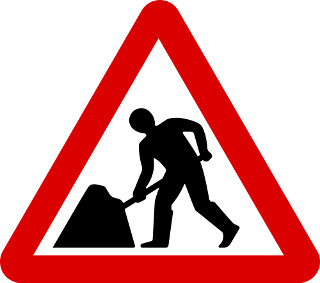Got Choices?

Where Money Comes From
One of the primary complaints coming from those critical of our current banking system is: It is unfair that banks can make new money out of nothing and then earn interest on that money. It seems unbelievable that a representative government would grant such power to a private monopoly–at least if they had the people’s best interests at heart.
The argument goes like this:
- The bank creating the new money is allowed to lend out more than they actually have in deposits.
- In US banking this multiple is approximately 10.
- If a bank has $100,000 of actual deposits, they can lend out, and hence create new money, of approximating $1,000,000.
- As many critics say, this is new money created out of nothing and it is really unfair that banks are allowed to do this.
- A million dollars is really a lot compared to a hundred thousand. Banks should not be allowed to lend out more than they actually have.
It is true that the current central banking system has very real problems and badly needs to be reformed. But the argument above is not entirely correct. Most significantly, it does not properly identify the biggest problems with the fractional reserve system.
Remember, the original goldsmiths didn’t create money out of nothing. They created it out of gold. Even though fractional reserve banking seems analogous to the goldsmiths printing phony gold certificates, it really is not.
In the case of a properly secured loan, a modern banker does not create money out of nothing. Rather, he creates it out of your home and also your future labor. In fact, it might even be said that the bank did not create the money at all. You did.
If you have borrowed money to buy a home or a car, you have created money! In a very real sense that is your money. You created it and you can choose exactly when to destroy it. All you have to do is pay the loan back and the money will disappear, vanished from the economy.
Hard to imagine? It is true. You really can make money, but you don’t do it by getting a job–you do it by taking out a loan.
But wait! Don’t toss that resume out just yet. Because if you want to create value or prosperity instead of just money, you will have to keep working at that job.
This leads us to the big revelation: not only can money be made from the act of incurring debt, or credit as it is also commonly called, but as it turns out, virtually all modern money is debt.
This excludes something that is really a commodity that we just call money. For example, a gold coin is readily thought of as money. But first and foremost, it is gold. And you can turn it into a bracelet, a false tooth, or an integrated circuit. It has intrinsic value all by itself.
But the minute you store it in a vault and issue a certificate against it, it is no longer the money–it is now the backing for the money. It is the certificate, or gold-backed note that becomes the money. In the case of the goldsmiths, the paper money represented a debt, or an obligation of the goldsmith. It had to be satisfied eventually by relinquishing the associated gold back to its rightful owner.
In the case of the modern money you keep in your checking account, it has to be ultimately satisfied by you going to your job, producing value for your employer, and then sending some of that money back to your bank to pay down the loan. You are the backing for the money you create through your own debt. If you fail, the bank will take your house and rely on that to fulfill the obligation of its own notes.
The purpose the bank fulfills is simple: they are willing to take a private note from you because they know you. They have studied your collateral and your prospects for continued employment. They have determined how likely you are to be able to pay back the debt. And then they issue a corresponding public promise, or note, indicating they are fit and capable of honoring the obligation. In a sense, they are guarantying that the money you have created is dependable. By issuing standardized dollars, backed by the U.S. government, they are taking on your private debt, which no one else knows they can trust, and turning it into publicly endorsed and sponsored debt so other people can more reliably depend on it to be good when the time comes to redeem it.
Now if you are a Federal Reserve conspiracy theorist, don’t get too disappointed. Central banking is still very wrong on a number of levels and we need to reform it–but not because they make money out of nothing. It is important we not miss this critical point: we are the ones who back the money. For the most part, we are the ones who create it.
Our own hard-earned assets are being pledged as collateral. And it is our hard work that must be performed in order to redeem the obligation. As we contemplate reforms, we must do it in a way that brings control back where it is deserved–in the hands of the individual producers and backers of credit: the borrowing public.
